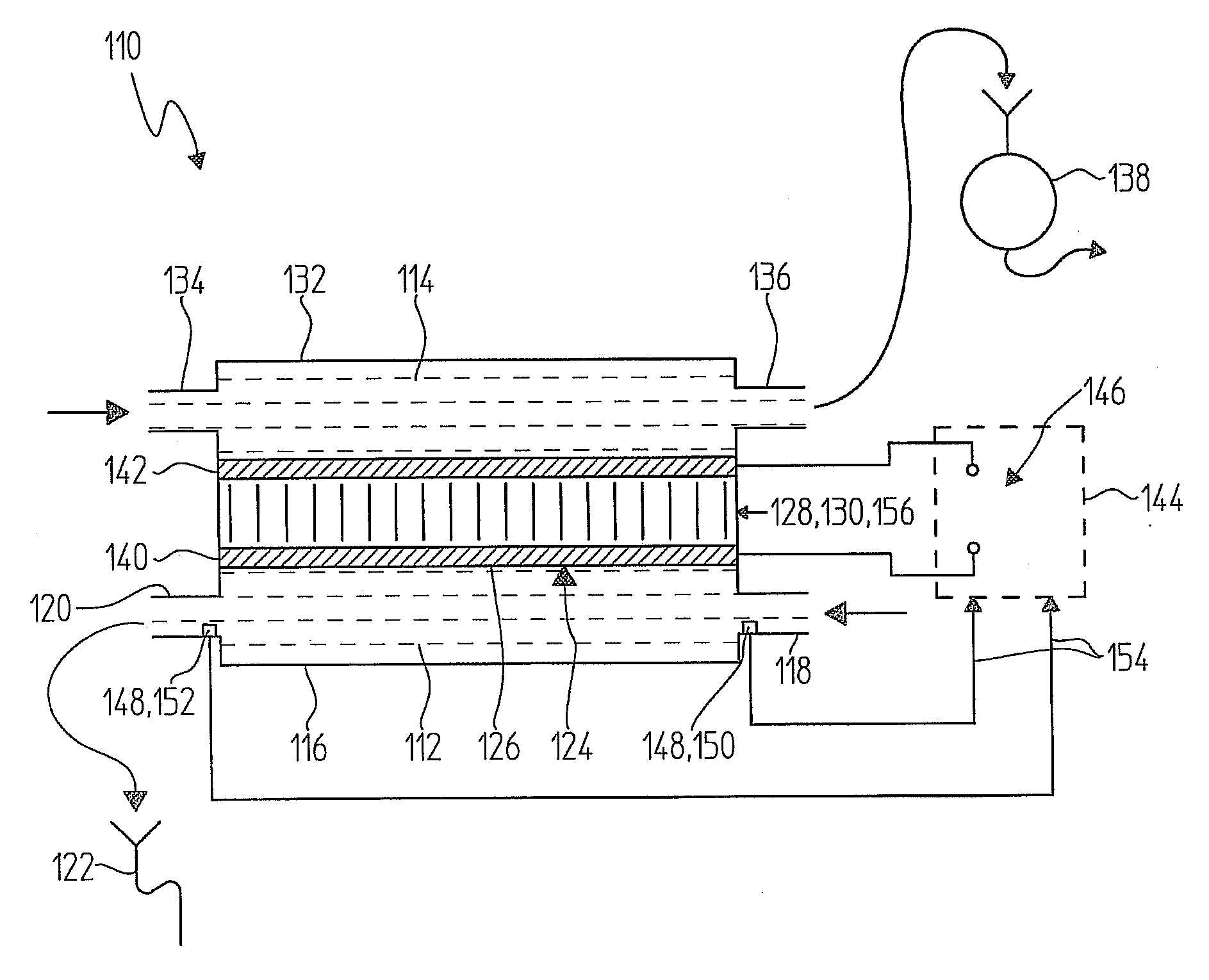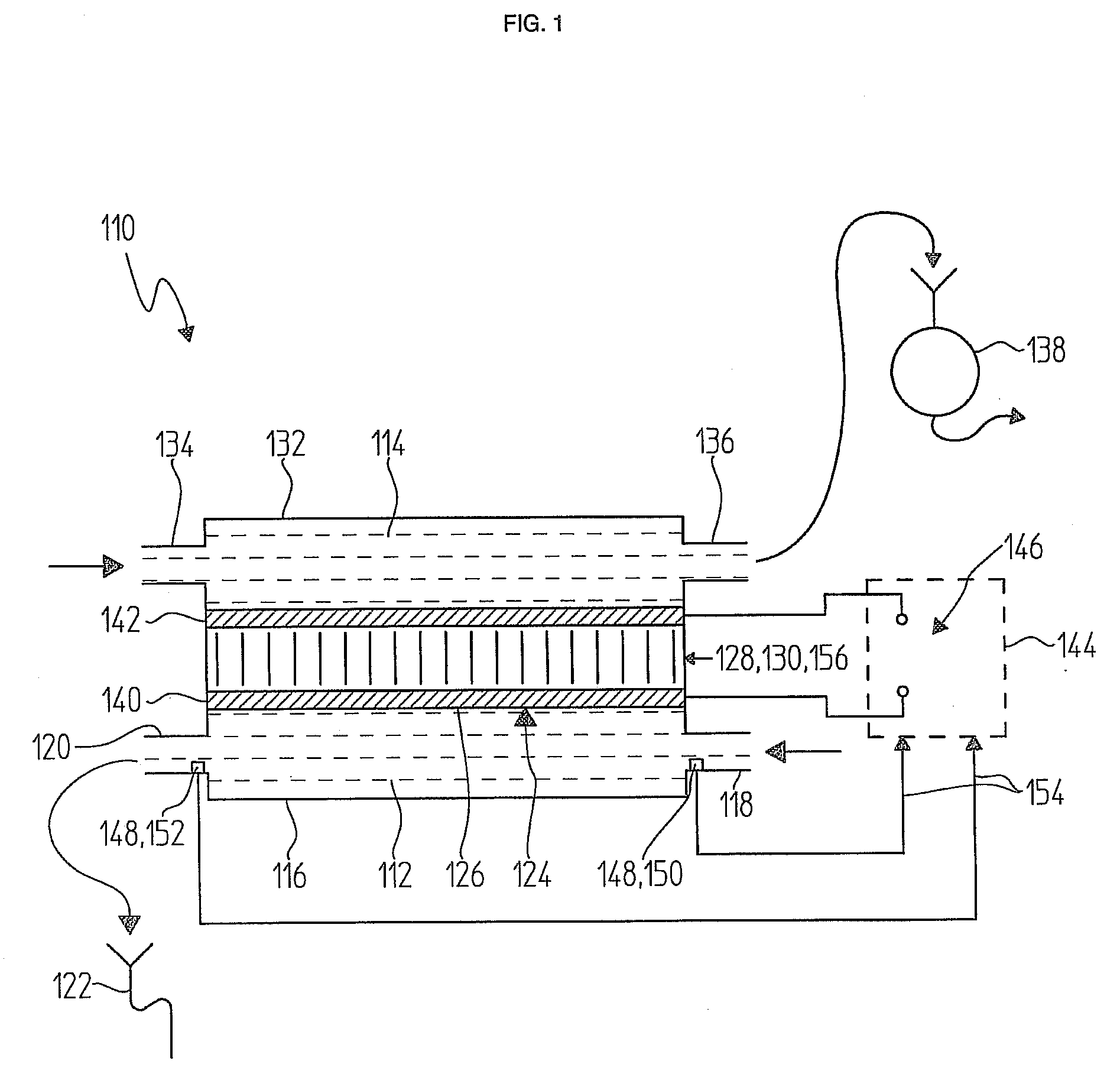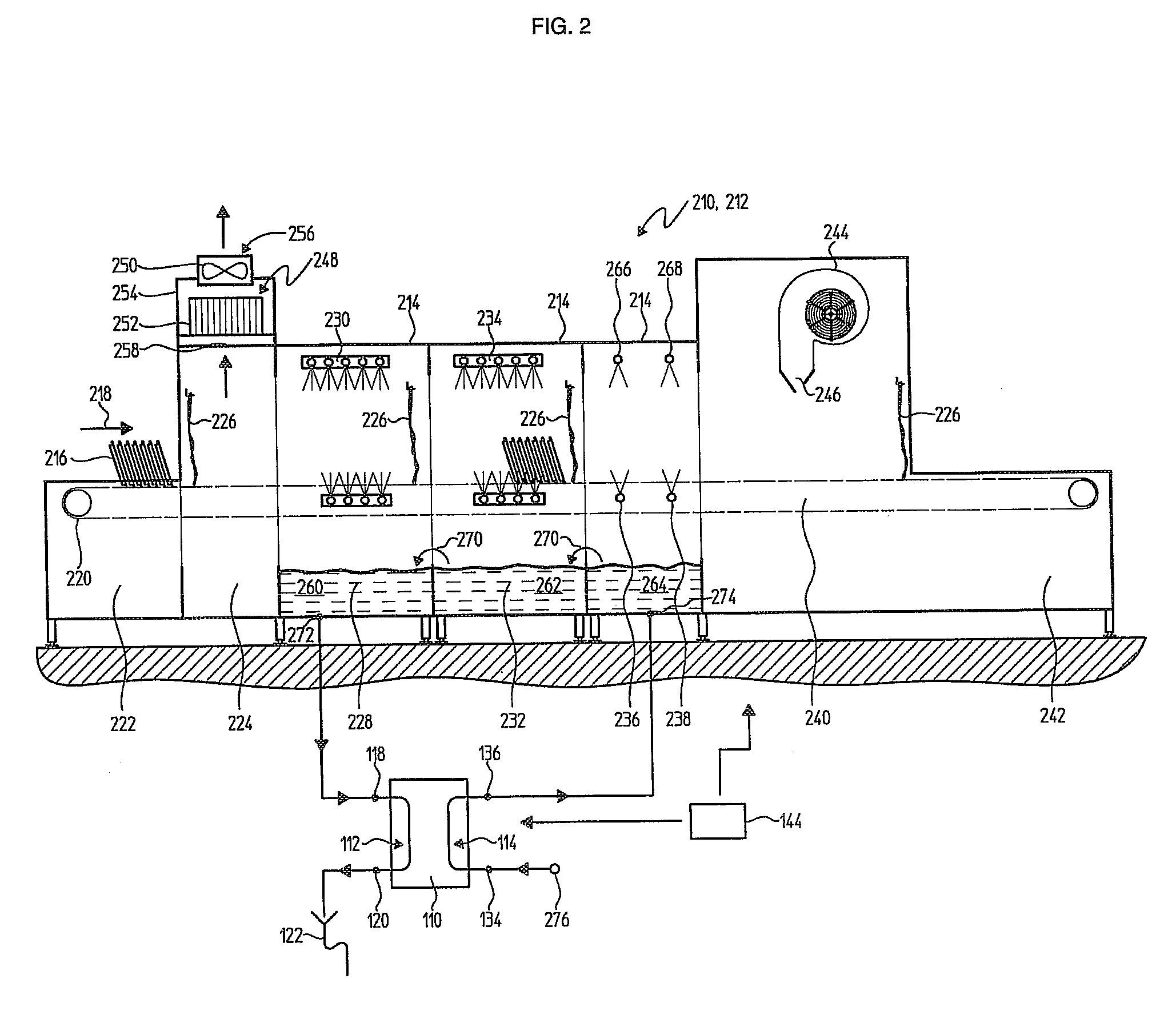[0014]The invention is based on the basic idea that, in particular for use in heat recovery systems for recovering heat from waste water, fatty impurities can be eliminated by the brief introduction of heat into the otherwise cold heat exchanger surfaces. In the process, the impurities are melted or at least deformed and can thus be easily removed by, for example, the waste water flowing past the heat recovery device or through this heat recovery device. Cleaning can also be performed in this way for heat recovery devices used in other fluid media, for example heat recovery devices in exhaust-air streams of dishwashers, since molten impurities can, for example, be washed away more easily or can drain completely, for example, into a collection container or another disposal
system.
[0018]The heat recovery device further has at least one controller which is designed to carry out a self-cleaning process for the heat exchanger. As described above, the heat exchanger surface is briefly heated by means of the heating device, for example to the abovementioned temperatures, during the self-cleaning process. However, higher or lower temperatures are also possible, for example temperatures above 90° C. or 100° C. As described above, the layer of impurities is preferably melted or at least softened by the action of heat during the self-cleaning process for the heat exchanger, and so said layer of impurities can be removed more easily. Additional media, in particular the fluid medium itself, can then actually remove the
impurity.
[0020]The proposed heat recovery device therefore permits rapid and efficient self-cleaning, without the operation of the appliance or a surrounding area in which the heat recovery device is used having to be influenced by the self-cleaning process. In particular, a washing mode of a dishwasher or another type of cleaning mode, for example, can be continued without interruption, with heat recovery being reduced or stopped only during the self-cleaning process. In this case, “brief” is to be understood as a self-cleaning process which is carried out for, for example, between 30 seconds and 3 hours, but preferably in the region of a few minutes (for example 1 to 30 minutes). However, shorter or longer self-cleaning processes are possible in principle and are intended to be covered by the term “brief”. The term “brief” therefore means only that the heating device is not operated continuously, so that the overall function of heat recovery is not significantly interrupted by the self-cleaning process.
[0022]Combination of the heat exchanger with the
heat pump provides the considerable
advantage that the comparatively low temperatures which usually occur during heat recovery can be compensated. Customary waste-water temperatures, for example, are therefore approximately 60° C. in the field of commercial dishwashers. Even in the event of complete transfer of this temperature to a transportation medium, for example a rinsing liquid, this temperature is generally not sufficient for expedient utilization in the dishwasher itself, and so additional heating would be required. By virtue of the interposition of a
heat pump, the transportation medium, for example a cleaning fluid which is used in a cleaning appliance and is heated in advance by means of the heat drawn from the fluid medium, can preferably be heated to a target temperature, for example a temperature of between 80° C. and 90° C., which can be used, for example, in a rinsing process.
[0024]In this way, the advantages of the invention, namely self-cleaning by means of the brief introduction of heat and as a result the
elimination of, in particular, fat impurities, can be combined with the advantages of
heat pump coupling, by means of which the recovered thermal energy can be raised to a
usable temperature level. Additional heating elements can be dispensed with in this case.
[0028]However, as an alternative or in addition to the said sensor principles, it is particularly preferred when at least
two temperature sensors are used as
dirt sensors. For example, the temperature sensors can be designed in such a way that they detect a temperature of the fluid medium before and after the medium flows through and / or across the heat exchanger. If the level of soiling on the heat exchanger plates rises, the efficiency of the heat exchanger falls, and the
temperature difference before and after the medium flows through the heat exchanger falls. It is therefore possible, in this way, to likewise effectively detect
dirt, and a self-cleaning process can be initiated, for example, automatically.
 Login to View More
Login to View More  Login to View More
Login to View More 


